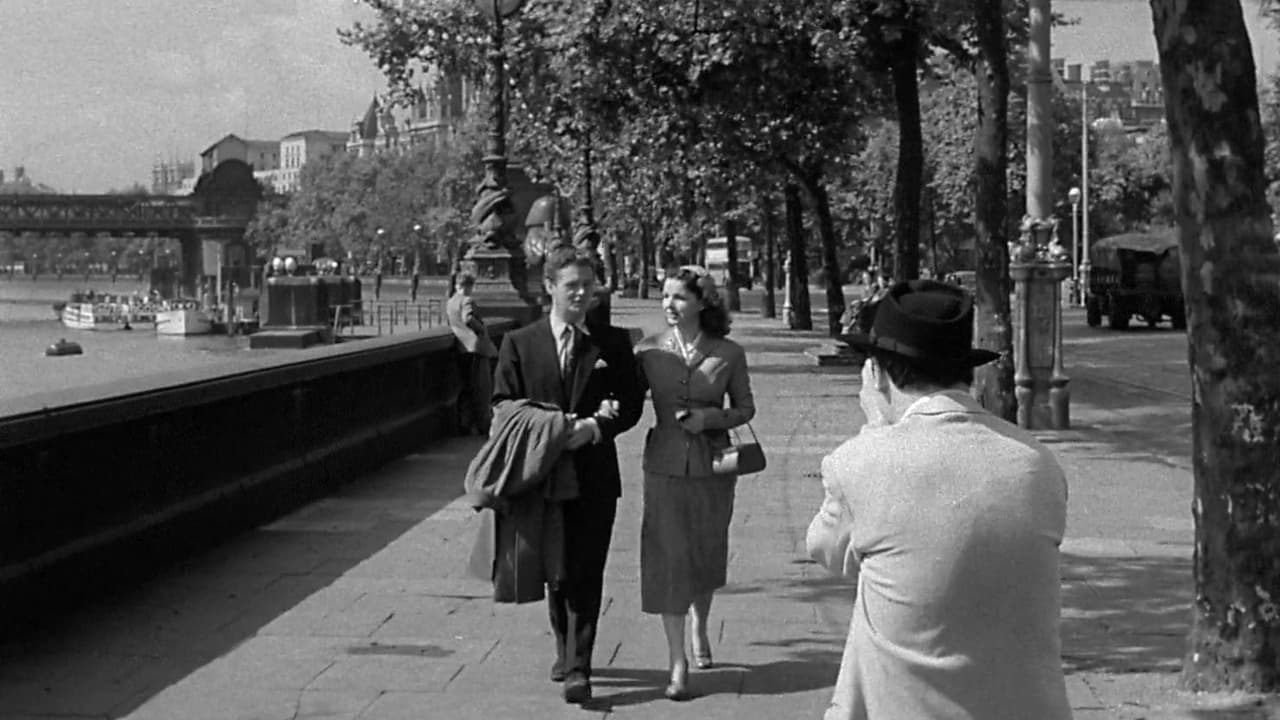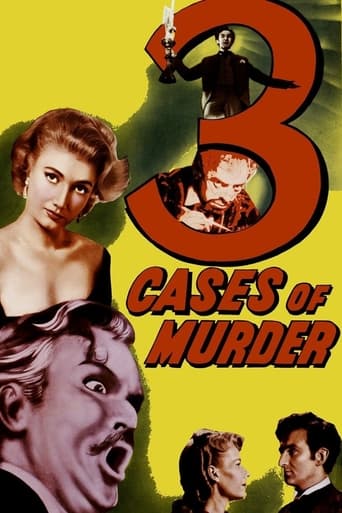

I love the way Eamonn Andrews, in his introduction, saunters over to the mantelshelf, picks up the cigarettes and lights one! How better to make him seem to be acting naturally in the 50s?Story 1 is intriguing and disturbing but a bit too long. Some of the flat spots add to the suspense and atmosphere, but some are just flat spots.Agatha Christie has spoiled us for the likes of Story 2. I'm sure most people see the twist coming a mile off. The only sub-standard section.A great actor and a master storyteller come together to produce something special in Story 3, marginally better than Story 1 and thus best of the bunch.
... View MorePlaudits to "Talking Pictures TV" for putting this criminally - neglected British gem into their late - night schedules. One of the later "portmanteau" works, anchored by the urbane Mr Eamonn Andrews who was huge on English television in the mid 1950s,"Three cases of murder" featured the extraordinary talents of Alan Badel in all three segments. The first - directed by Wendy Toye - is one of the cinema's eeriest experiences.Much of it shot in deep focus and at weird angles and with intense acting by Mr Badel as the ghost of a painter whose work is on display at a small museum. This also features Eddie Byrne as a barking mad naturalist called "Snyder"whose hobby is pinning insects to pieces of card.His latest acquisition(human) is several times referred to as "Snyder's trophy" - an allusion that may well be lost on 21st century viewers but would not have escaped a contemporary audience. I found it very disconcerting and a minor triumph for director and actors both. The second features the amiable John Gregson in a rare non - military role as one of a pair of chums inseparable since school who both go up to Cambridge(Trinity College) and from there to the advertising industry before falling for the same woman with entirely predictable results. THe main interest for modern viewers is the entirely civilised way the (rather ancient) undergraduates behave at their "May Ball" compared to their successors. Finally Orson Welles stars as the arrogant Foreign Secretary who belittles the splendid Alan Badel(A Welsh Firebrand M.P.) on the floor of the House and soon wishes he hadn't. The expected amount of scenery is chewed and as long as the cheque cleared I suspect Welles was a happy man. Do catch this if you possibly can.Hardly anyone will have heard of it and it really is worth the effort. In particular,the Wendy Toye episode is required viewing for serious students of British movies.
... View MoreEamonn Andrews is the link man for two tales of supernatural suspense and one murder mystery.In the first segment, titled In The Picture, an art gallery guide is lured into a macabre house painting by the artist and finds himself at the mercy of the residents who dwell there. In the second segment, titled You Killed Elizabeth, two friends fall in love with the same woman and when she is murdered it's obvious one of them did it. But which one? The final segment, titled Lord Mountdrago, The Secretary of State for Foreign Affairs ruins the career of an opponent in Parliament and finds the man appearing in his dreams enacting retribution.As is always the case with anthologies, the quality of stories is mixed, with here the middle section being the one that is pretty standard fare. No such problem with the other two stories though.The first one is very creepy, even bordering on the terrifying as the tale reaches its conclusion. Once the story reaches the insides of the house in the painting, we are treated to a trio of odd characters living in a house that instantly conjures up images of horror. Ramshackle and creaky, director Wendy Toye further enhances the discord by using canted angles and personalised framing. An excellent story. Starring Hugh Pryse, Alan Badel and Eddie Byrne.The third tale is considerably boosted by Orson Welles giving bluster to the story written by W. Somerset Maugham. Not without genuine moments of humour, it never reaches scary heights but always it feels off-kilter, the revenge dream attack angle devilish and the production has good quality about it. Very good. Alan Badel co-stars and although the three stories are not related, he is the constant actor in all three. Grand old British trilogy. 8/10
... View MoreAll three stories contained within this film have interesting concepts, but they don't quite reach their full potential. The best is the first, directed by a woman (Wendy Toye), mainly for a fantastic (in every sense of the word), hypnotic sequence of two people entering a painting; this story is certainly highly imaginative, but the dialogue does tend to ramble a little. The second story, about two childhood friends and the woman who comes between them, has a good setup, but the big twist is blindingly obvious; to be fair, though, what happens after the big twist is much less so. The third story also has a great concept (a man entering another man's dreams at will), but it goes on too long, and in my opinion Orson Welles is slightly miscast as a victimized character. Alan Badel, who appears as three different characters in all three stories, walks away with the acting honors. **1/2 out of 4.
... View More